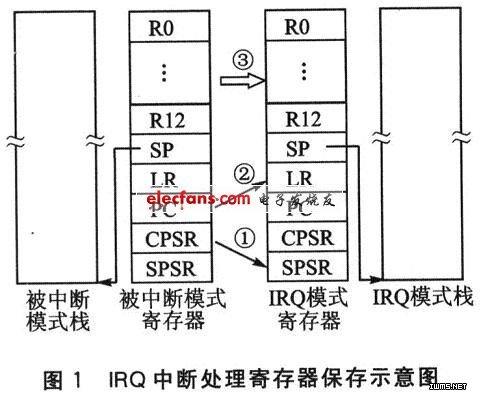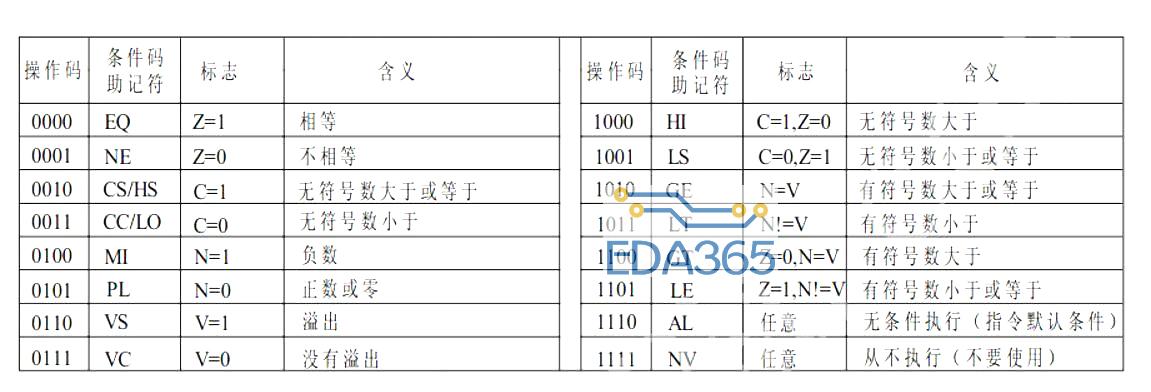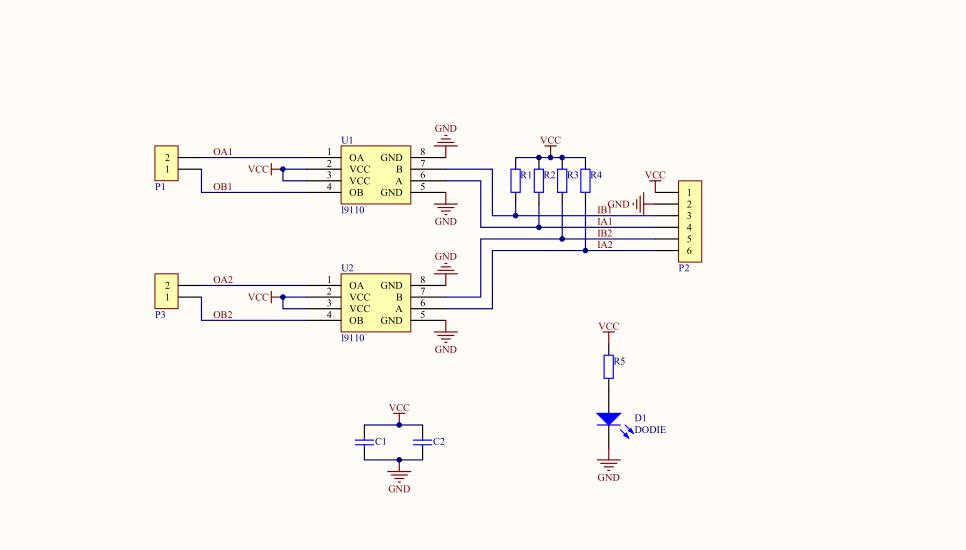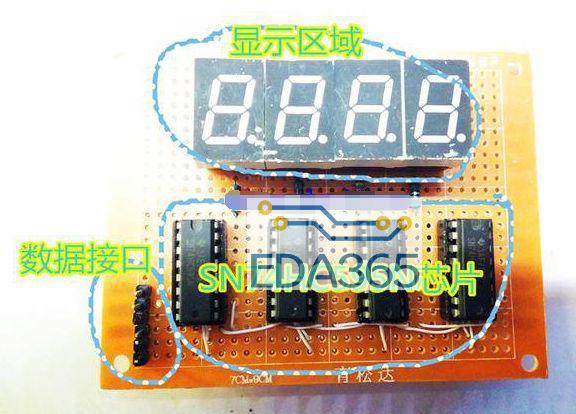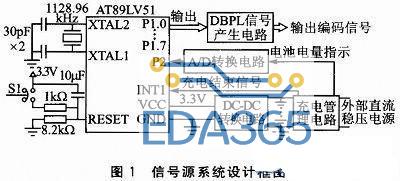说明:本工程代码在STM32F407ZET6上测试通过。
1、PWM定义
Pulse Width Modulation:脉冲宽度调制(PWM)
2、用途
(1)控制输出的电压和电流
(2)灯光的亮度
(3)电机控制
3、分析PWM产生与重点
(1)分析PWM产生(看图示PWM)
(2)区别PWM1与PWM2模式(STM32F4xx中文参考手册 433页)
(2)高低电平极性区别(STM32F4xx中文参考手册 457页)
4、PWM库函数开发流程
(1)使能定时器14和相关IO口时钟:
使能定时器14时钟:RCC_APB1PeriphClockCmd();
使能GPIOF时钟:RCC_AHB1PeriphClockCmd ();
(2)初始化IO口为复用功能输出:
函数:GPIO_Init();
GPIO_InitStructure.GPIO_Mode = GPIO_Mode_AF; //复用功能
(3)GPIOF9复用映射到定时器14:(PE9引脚复用为TIM14,同时与一个LED灯连接)
GPIO_PinAFConfig(GPIOF,GPIO_PinSource9,GPIO_AF_TIM14);
(4)初始化定时器:ARR,PSC等:
TIM_TimeBaseInit();
(5)初始化输出比较参数:
TIM_OC1Init();
(6)使能预装载寄存器:
TIM_OC1PreloadConfig(TIM14, TIM_OCPreload_Enable);
(7)使能自动重装载的预装载寄存器允许位:
TIM_ARRPreloadConfig(TIM14,ENABLE);
(8)使能定时器;
(9)不断改变比较值CCRx,达到不同的占空比效果:
TIM_SetCompare1();
5、函数说明
从库函数当中可以截取出相关函数的说明
* @brief Initializes the TIMx Channel1 according to the specified parameters in
* the TIM_OCInitStruct.
* @param TIMx: where x can be 1 to 14 except 6 and 7, to select the TIM peripheral.
* @param TIM_OCInitStruct: pointer to a TIM_OCInitTypeDef structure that contains
* the configuration information for the specified TIM peripheral.
* @retval None
*/
void TIM_OC1Init(TIM_TypeDef* TIMx, TIM_OCInitTypeDef* TIM_OCInitStruct);
//本实验只是用到PWM,所以只需配置该结构体中的三个成员
typedef struct
{
uint16_t TIM_OCMode; //PWM1模式或PWM2模式
uint16_t TIM_OutputState; //输出是否使能
uint16_t TIM_OCPolarity; //输出极性
} TIM_OCInitTypeDef;
//改变CCR值
/**
* @brief Sets the TIMx Capture Compare1 Register value
* @param TIMx: where x can be 1 to 14 except 6 and 7, to select the TIM peripheral.
* @param Compare1: specifies the Capture Compare1 register new value.
* @retval None
*/
void TIM_SetCompare1(TIM_TypeDef* TIMx, uint32_t Compare1);
6、具体代码
#include "pwm.h"
#include "systick.h"
//TIM14配置
void Pwm_Time14_Init(void)
{
TIM_OCInitTypeDef TIM_OCInitStruct;
GPIO_InitTypeDef GPIO_InitStruct;
TIM_TimeBaseInitTypeDef TIM_TimeBaseInitStruct;
//通用定时器的时钟是APB1(42)*2 = 84MHz
RCC_APB1PeriphClockCmd(RCC_APB1Periph_TIM14, ENABLE);
RCC_AHB1PeriphClockCmd(RCC_AHB1Periph_GPIOF, ENABLE);
GPIO_InitStruct.GPIO_Pin = GPIO_Pin_9;
GPIO_InitStruct.GPIO_Mode = GPIO_Mode_AF;
GPIO_InitStruct.GPIO_OType = GPIO_OType_PP;
GPIO_InitStruct.GPIO_Speed = GPIO_Speed_100MHz;
GPIO_InitStruct.GPIO_PuPd = GPIO_PuPd_UP;
GPIO_Init(GPIOF, &GPIO_InitStruct);
//GPIOF9复用映射到TIM14
GPIO_PinAFConfig(GPIOF, GPIO_PinSource9, GPIO_AF_TIM14);
TIM_TimeBaseInitStruct.TIM_Prescaler = 84-1;
TIM_TimeBaseInitStruct.TIM_Period = 500-1;
TIM_TimeBaseInitStruct.TIM_CounterMode = TIM_CounterMode_Up;
TIM_TimeBaseInitStruct.TIM_ClockDivision = TIM_CKD_DIV1;
TIM_TimeBaseInit(TIM14,&TIM_TimeBaseInitStruct);
TIM_OCInitStruct.TIM_OCMode = TIM_OCMode_PWM1;
TIM_OCInitStruct.TIM_OutputState = TIM_OutputState_Enable;
TIM_OCInitStruct.TIM_OCPolarity = TIM_OCPolarity_Low;
TIM_OC1Init(TIM14,&TIM_OCInitStruct);
//使能预装载寄存器
TIM_OC1PreloadConfig(TIM14, TIM_OCPreload_Enable);
//使能自动装载与预装载寄存器的允许位
TIM_ARRPreloadConfig(TIM14,ENABLE);
//使能TIM14定时器
TIM_Cmd(TIM14, ENABLE);
}
//呼吸灯
void Led_Breath(void)
{
uint32_t cnt;
for(cnt=0; cnt<=500; cnt++)
{
TIM_SetCompare1(TIM14,cnt);
delay_ms(5);
}
for(; cnt>0; cnt--)
{
TIM_SetCompare1(TIM14,cnt);
delay_ms(5);
}
}
『本文转载自网络,版权归原作者所有,如有侵权请联系删除』
 热门文章
更多
热门文章
更多

